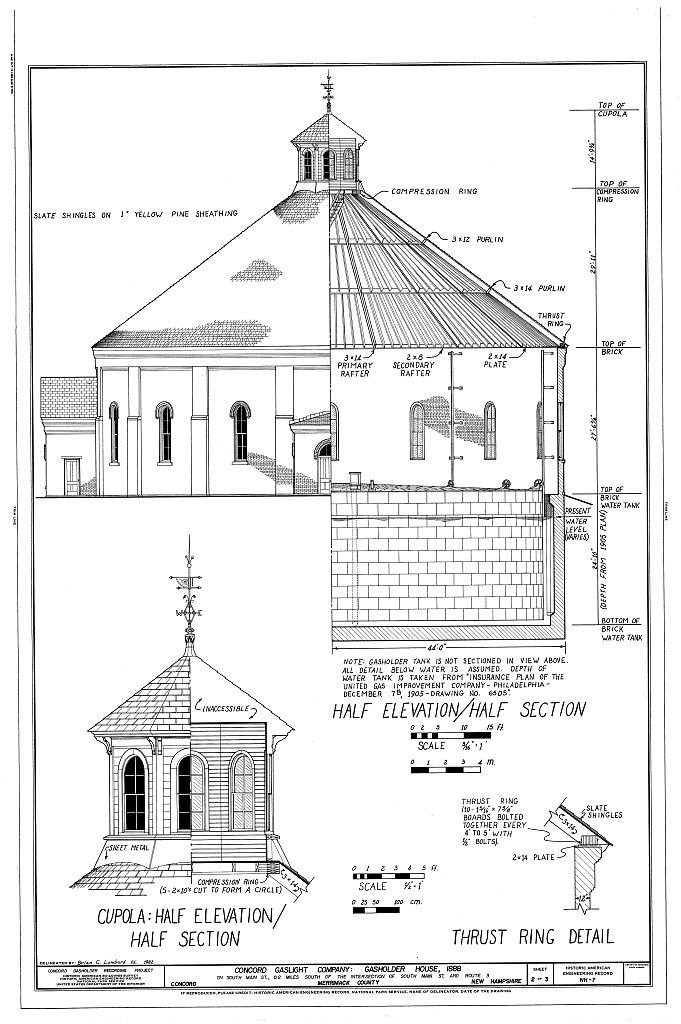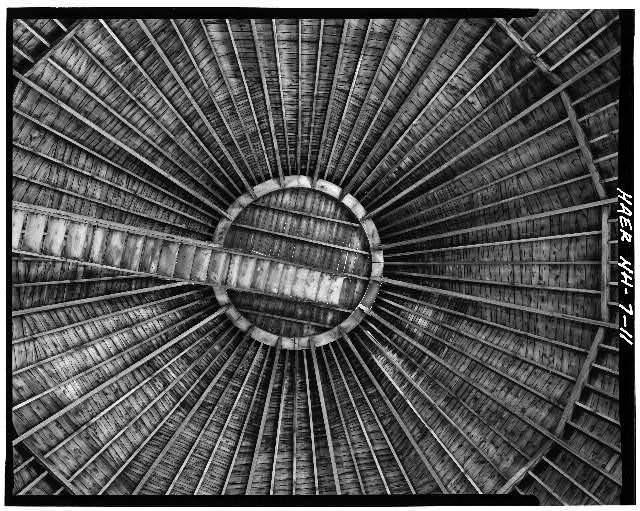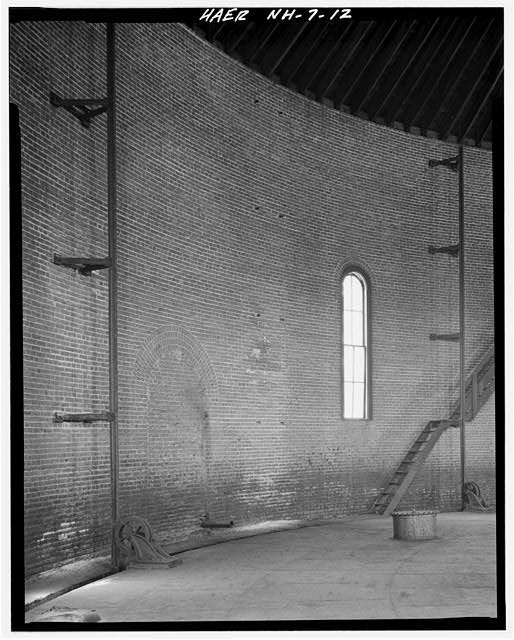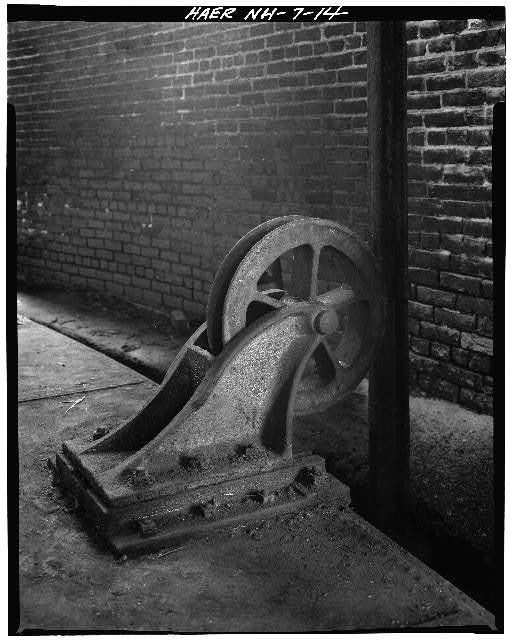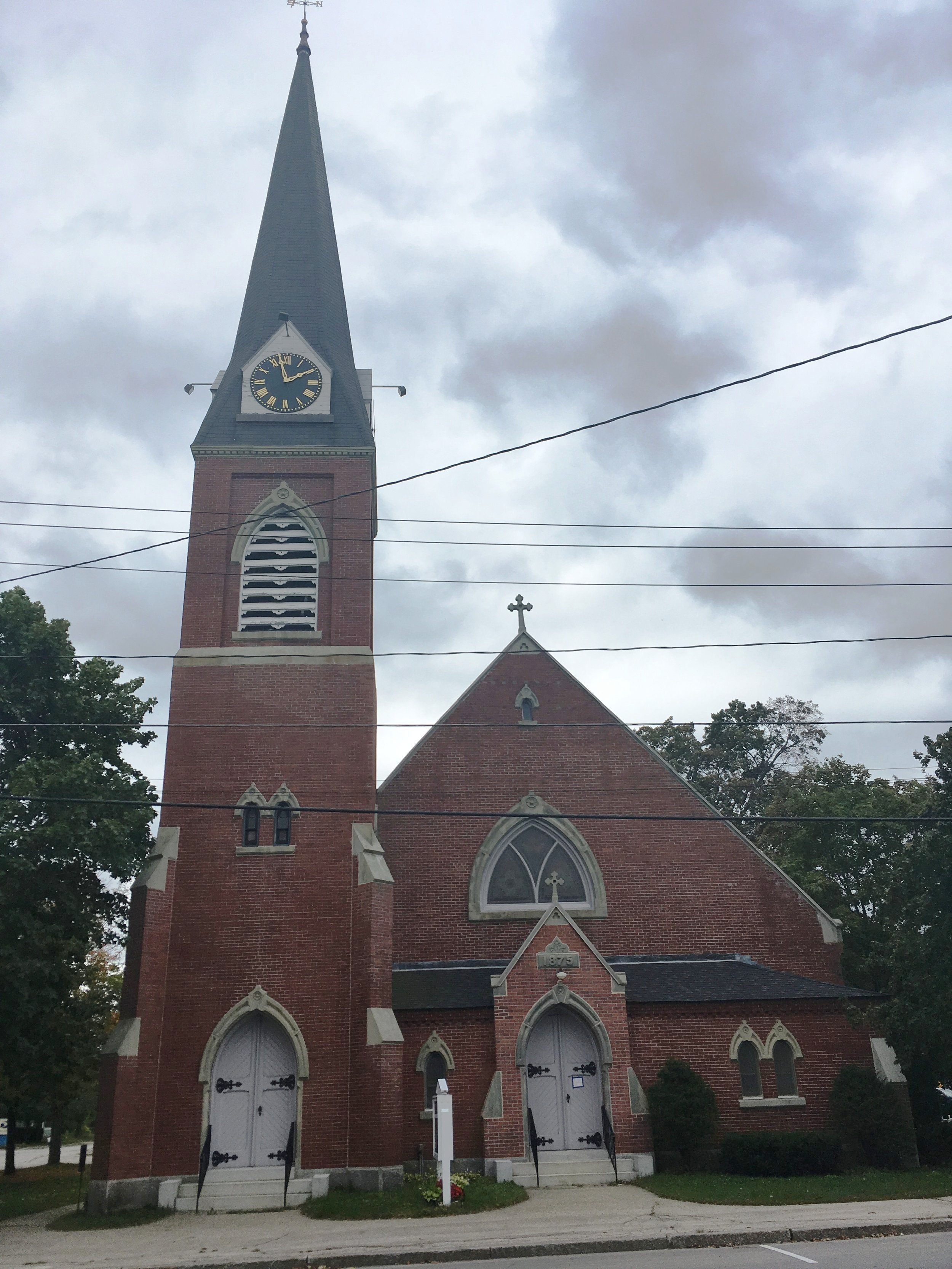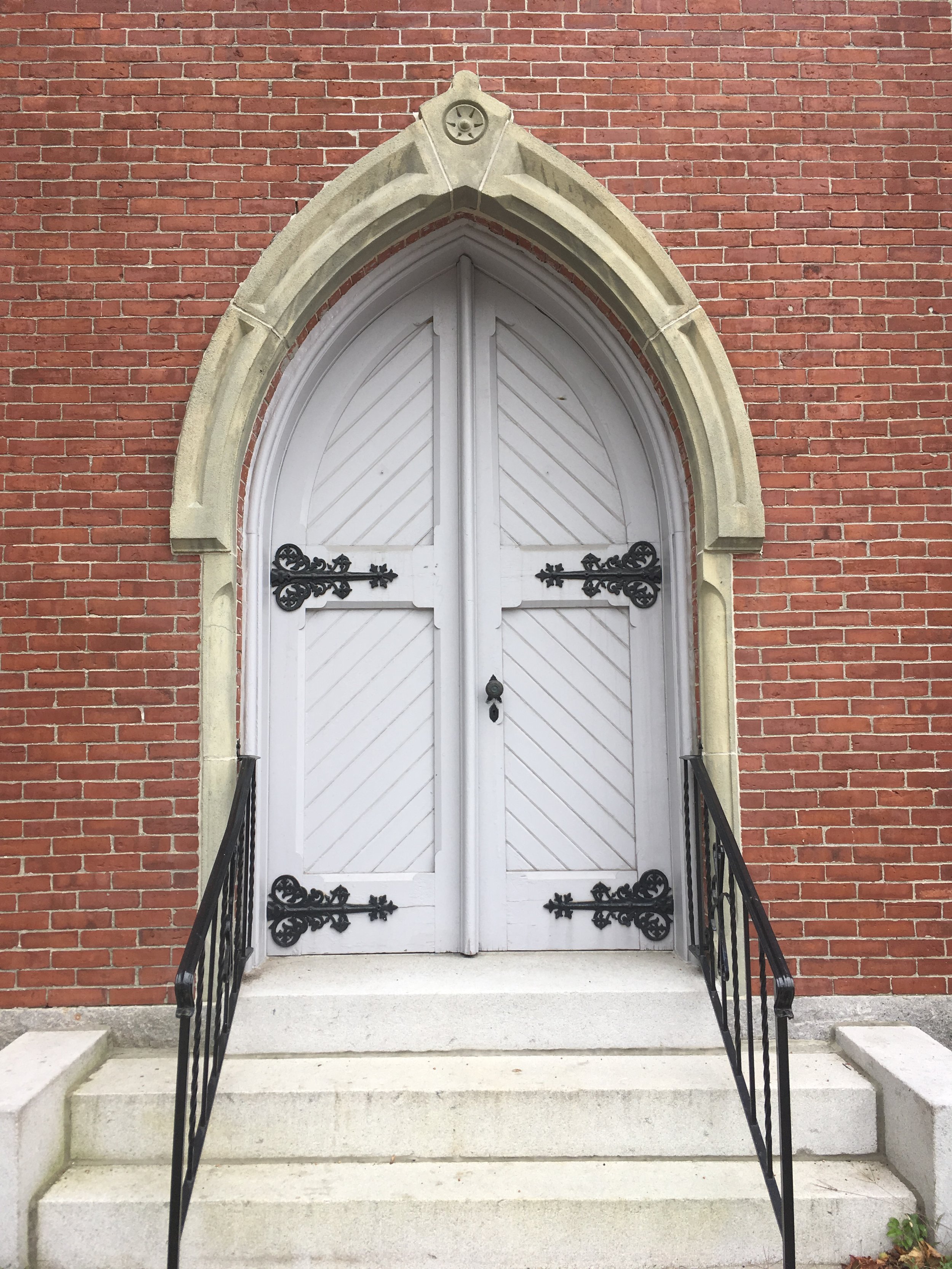New properties added to National Register of Historic Places
Concord's iconic gasholder house off of South Main Street (Seven to Save, 2013) and Farmington's First Congregational Church were listed to the National Register of Historic Places this week.
Built in 1888 when coal gas was a major source of light and heat, the round Italianate Concord Gas Light Company Gasholder House is very likely the last gasholder house in the country that retains its interior equipment.
Here's how it worked (photos and drawings were done by the Historic American Engineering Record, HAER, available at the Library of Congress):
An interior tank contains a sheet metal "bell" designed to raise and lower into a below-grade water tank on eight iron rails. (That below-grade tank can hold 800,000 gallons.) As gas entered and left the building, this bell would rise accordingly. Any gas escaping the bell would vent through the cupola. Currently, the bell is empty and resting below grade in the water tank, forming a floor.
Concord's Heritage Commission sponsored the nomination of the landmark structure amid public concerns for its preservation after a tree fell on its north roof slope during a storm. That tree damaged some structural members and the wall cornice. The building has been temporarily stabilized but not repaired.
"The Heritage Commission is pleased that the gasholder has been placed on the National Register of Historic Places," said Phil Donovan, who served as Concord Heritage Commission chairman during the project. The Commission used survey funds available to Certified Local Governments to hire Public Archaeology Laboratory (PAL) out of Pawtucket, RI to write the nomination. "The gasholder is an extremely important and iconic landmark in the city. We hope that the listing will bring additional attention and resources to the building and aid its current or future owners in its preservation. We are grateful to Liberty Utilities for their cooperation and permission to undertake the listing."
Current chairman and long-time commission member J. Richard Jaques, Sr. concurred with Donovan and noted that the listing and increased public awareness of the building’s significance will be helpful as stakeholders continue to try to find a “win-win” solution for the building.
The gasholder house is currently for sale, with restoration costs expected to cost upwards of $1 million.
Also listed to the National Register this week was Farmington's First Congregational Church. The Gothic Revival brick church on Main Street was designed by Frederick N. Footman and includes stained glass windows painted with the Grisaille technique. Even more impressive: the nomination was written by Lorraine Doe, a member of the church.
Farmington received a grant from us to perform a conditions assessment on their historic building. That document will guide the congregation as they make repairs and plan for maintenance.
In New Hampshire, listing to the National Register makes applicable property owners eligible for grants such as the Land and Community Heritage Investment Program or LCHIP (lchip.org) and the Conservation License Plate Program, "Moose Plate."(nh.gov/nhdhr/grants/moose).
For more information on the National Register program in New Hampshire, please visit nh.gov/nhdhr or contact Peter Michaud at the New Hampshire Division of Historical Resources at 603-271-3583.
Correction 3/1/18: An earlier version of this blog credited Lisa Mausolf with preparing the National Register nomination for the Concord Gasholder House. Rather that credit belongs to Public Archaeology Laboratory (PAL).


